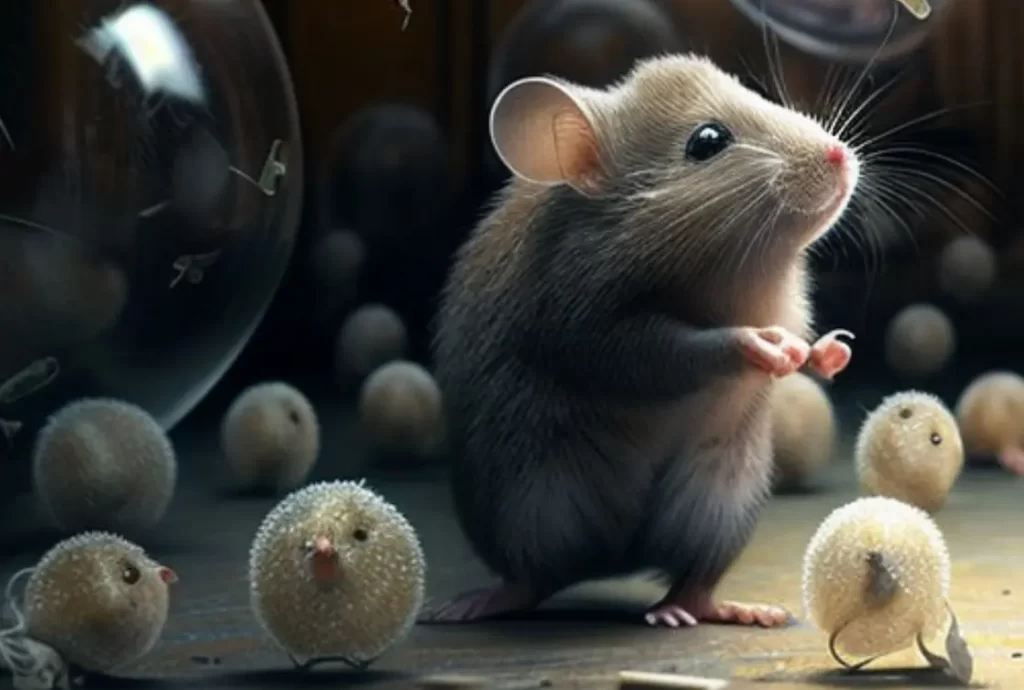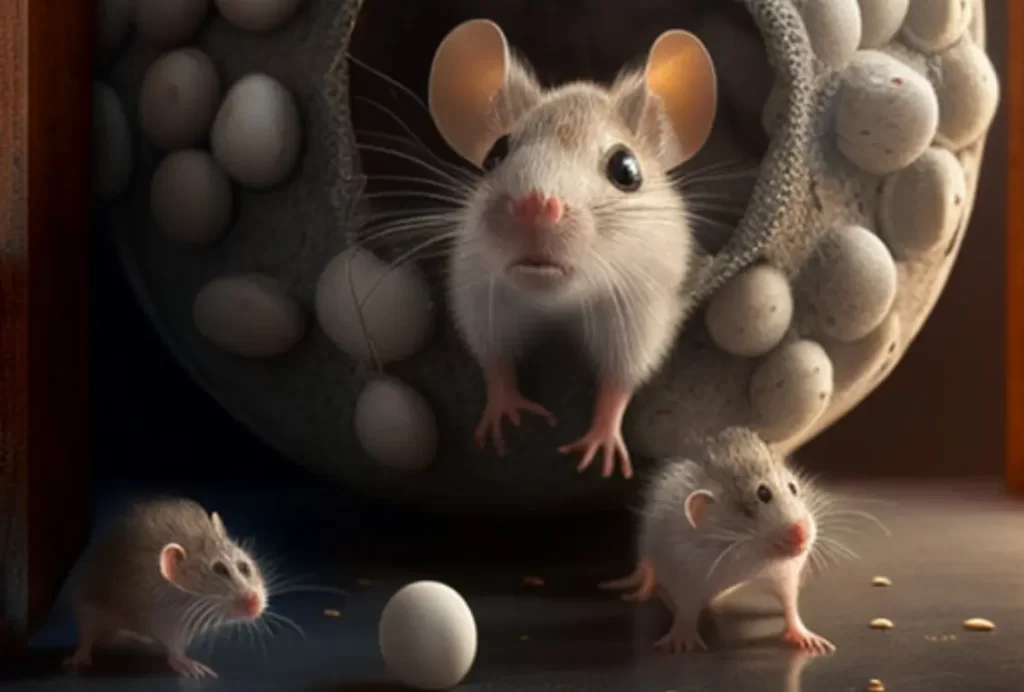Mothballs are a popular form of pest control, but do they really work to keep mice away? In this post, we’ll examine this form of pest management closely and talk about its benefits and drawbacks so you can decide if it’s the best way to handle your mouse problem.
Seite Inhalt
What Are Mothballs and How Do They Work?
Mothballs are small, solid balls that are created from a substance called naphthalene. They have a strong, pungent smell that is supposed to repel moths, flies, beetles, and other forms of insects.
Because of their potent odor, mothballs are frequently employed as a means of pest control. Therefore, mice will avoid areas that have mothballs since the smell is offensive to them.
Mothballs are commonly used in cabinets, drawers, and other closed spaces to deter pests. If you think pests might be lurking in your attic or cellar, you can put these to good use there, too.
It is crucial to highlight that mothballs should not be used in situations where children or dogs may come into contact with them, as they can be deadly if consumed.
Additionally, mothballs should be utilized in well-ventilated places, as the vapors can be harmful if inhaled.
Are Mothballs Safe to Use Around Humans and Pets?

In spite of their potential usefulness as a rodent deterrent, mothballs pose a risk if handled incorrectly. Exposure to or consumption of naphthalene is known to cause toxicity.
According to the CDC, “Inhalation of naphthalene may cause skin and eye irritation; gastrointestinal symptoms, such as nausea, vomiting, abdominal cramps, and diarrhea; neurologic symptoms, such as confusion, excitement, and convulsions“.
To contain the odor of mothballs and avoid skin contact, it is suggested that they be stored in airtight containers, such as jars or plastic bags.
Young children and pets should also be kept away from mothballs since they may be enticed to play with or even consume them.
The use of mothballs necessitates proper ventilation since the vapors they release might be harmful. Finally, mothballs constitute a threat to the environment if not disposed of appropriately.
How to Properly Use Mothballs to Deter Mice

The correct way to use mothballs as a mouse deterrent is as follows:
- Mothballs should be positioned in cracks and crevices near food supplies, as these are common mouse hangouts.
- Keep the mothballs in airtight containers so the odor doesn’t spread.
- Mothballs should be replaced every few weeks or when their scent fades.
- Away from living spaces where people and animals congregate, mothballs should be placed.
Always use caution when working with mothballs, and be sure to protect yourself with gloves and a mask. In addition, mothballs should be kept out of the reach of children and animals because they are poisonous if swallowed.
Alternatives to Mothballs for Mouse Control
There are a number of options available for mouse control if you’re seeking for an alternative to mothballs.
You may get rid of mice in your home by using glue traps or real traps. Use a repellent, like peppermint oil or predator urine, to generate an odor that mice find unpleasant and drive them away.
You can also use bait stations, which are equipped with poison food that lures mice and then poisons them to death.
Another choice is to fortify your house against unwanted guests by closing off all possible entryways.
Mice may fit through extremely narrow spaces, so it’s crucial to check for and plug any openings you find using caulk or steel wool. It is also possible to utilize a mix of these strategies to rid your home of mice.
Pros and Cons of Using Mothballs for Mouse Deterrent

There are benefits and drawbacks to using mothballs for pest control. Mothballs have a few advantages, including low cost and simplicity of application.
In addition, the foul odor they produce drives away pests like mice and roaches. However, mothballs are not without their downsides.
They should be kept in a safe place because they are dangerous if inhaled or swallowed. In addition, many may find the odor offensive, so proper ventilation is required while use.
Animals, especially dogs, may be attracted to the mothballs’ pungent odor and accidentally swallow them.
Pets and other animals should be kept far away from the mothballs, and the container should be kept in a secure area.
Furthermore, certain rodents may develop a tolerance to the smell of mothballs and become undeterred by them.
Conclusion: Is Using Mothballs an Effective Way to Keep Mice Away?
Using mothballs for pest control can be an effective way to keep mice away. But remember to use mothball in sealed bags and in rooms or places with adequate ventilation.
In addition, there are several alternative mouse control methods that may work better for you. You should figure out what approach will work best for you and then go with that.
Use of mothballs requires caution because they are poisonous if consumed by humans or animals. Therefore, keep them where kids and dogs can’t get to them.
Keep in mind that mothballs are not a permanent answer to your mouse problem. They might work temporarily, but you still need to take other measures to mouse-proof your home and get rid of any mice that are already there.
- Wo kann ich Bettwanzenbomben kaufen? - 30. Januar 2023
- Wo kann ich ein Mittel zur Bekämpfung von Bettwanzen kaufen? - 30. Januar 2023
- Wo kann ich Bettwanzenspray kaufen? - 30. Januar 2023
